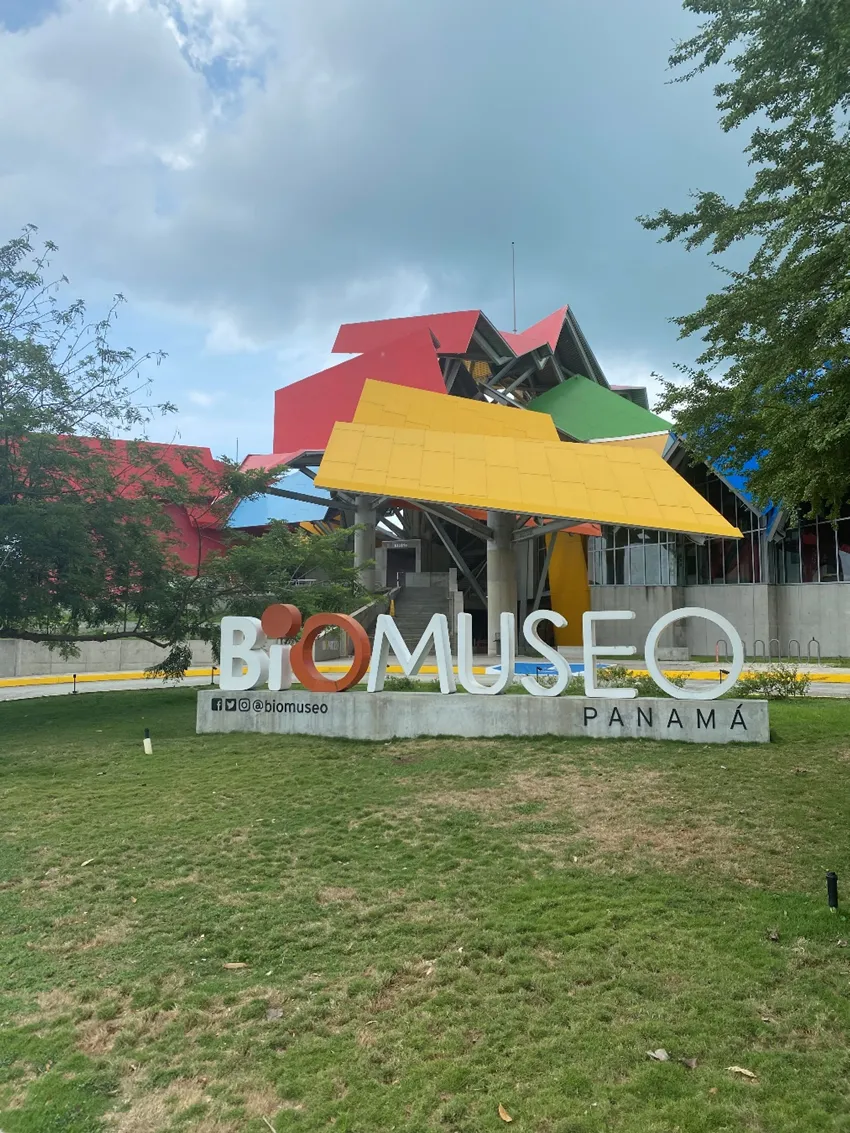
Dear friends and consistent readers of our publications, a few days ago I asked some dear friends, Alexander and Arelis, who live in Panama, if they had visited the Museum of Biodiversity, which, from what I had read, was a unique place on which was worth visiting. Indeed, they accepted my recommendation, but, unfortunately, the day of their visit was closed to the public, so they had to content themselves with taking a series of photos outside the Museum, but indicative of its architectural richness, which I am very pleased to share with you today. I must begin by indicating that this space, dedicated to biodiversity, has been promoted by the Amador Foundation, with the backing of the Panamanian government and the scientific support of the Smithsonian Institute, Washington D.C., and the University of Panama.
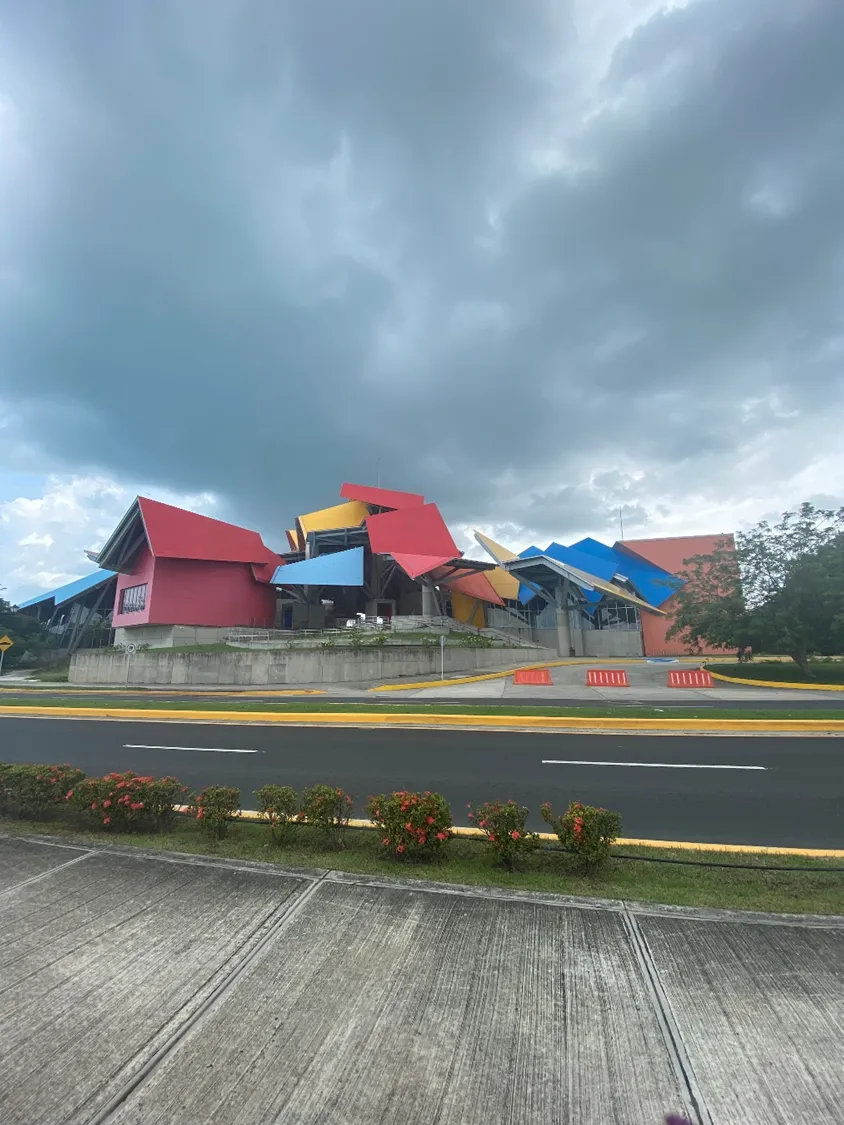
The Biodiversity Museum, called "Bridge of Life", opened its doors in 2014, it is an avant-garde architectural work, with its own interesting aesthetic. It is located on the Amador Causeway, covers an area of four thousand meters, and has a magnificent botanical garden, various services, cafeteria and shops. It has been built at the entrance to the Panama Canal in the Pacific Ocean, in one of the most biodiverse places on the planet.
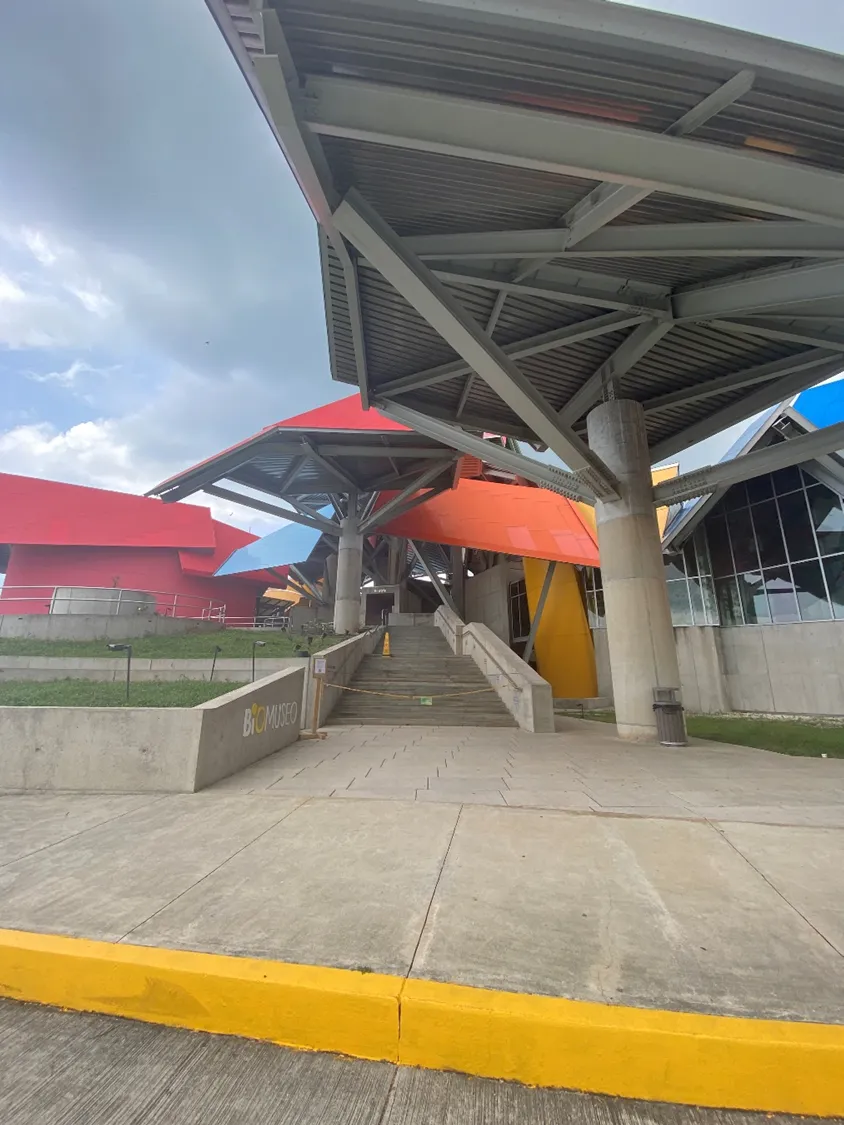
Its structure is made of very colorful folded metal panels, the 13,411square-meter work has been the only project carried out in Latin America by the renowned Canadian architect, who lives in the United States of America, Frank Owen Goldberg, known as Frank Gehry, winner of the Pritzke Prize. Gehry carried out this work with the collaboration of the Hindu architect Arnand Devarajan, responsible for the architectural design of the building. Gehry's objective was, on the one hand, to try to explain the ecological and geological history of the origin of the Isthmus of Panama and, on the other, to raise awareness of the need to conserve the country's natural heritage.
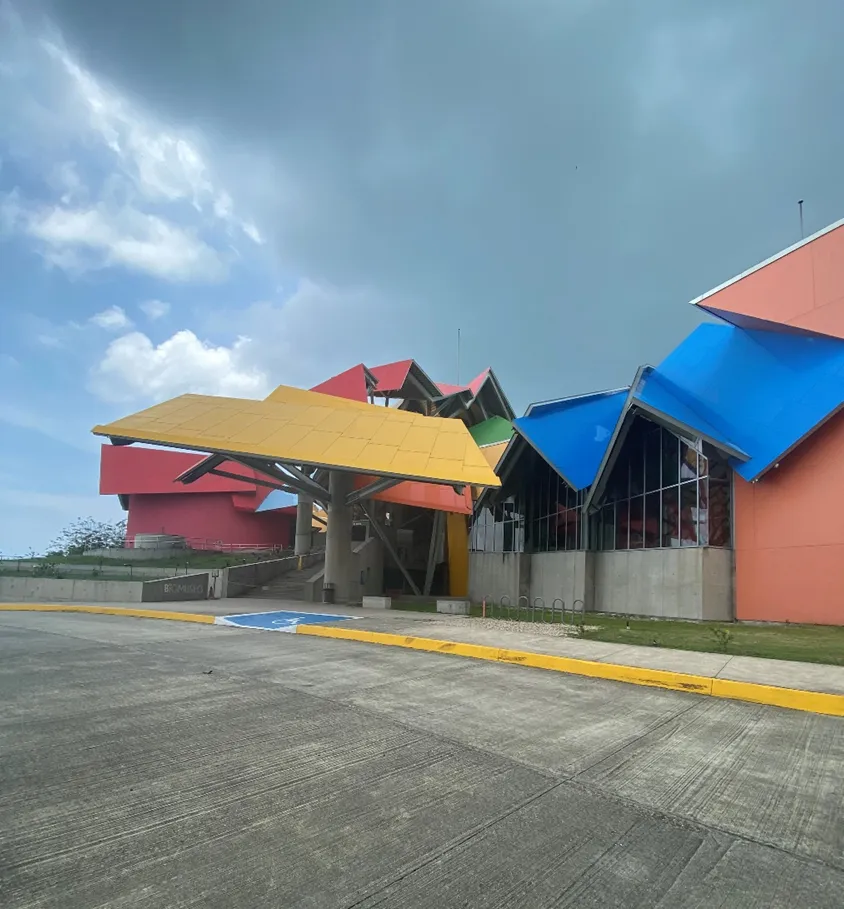
The hardcore of Frank Gehry's design for the Biomuseo is an open-air public atrium, covered by a dynamic, significantly striking structure made up of a set of aluminum canopies of various shapes and bright colors: blue, red, yellow, green, which makes it a magnet for tourists and local visitors. The canopies emulate the canal architecture of zinc roofs and colorful buildings, reminiscent of the spectacular neotropical habitat of Panama, and also form a protective layer against the frequent rains that are generally accompanied by strong winds. Elevated one story above ground level, the atrium offers expansive views of the Canal and Panama City.
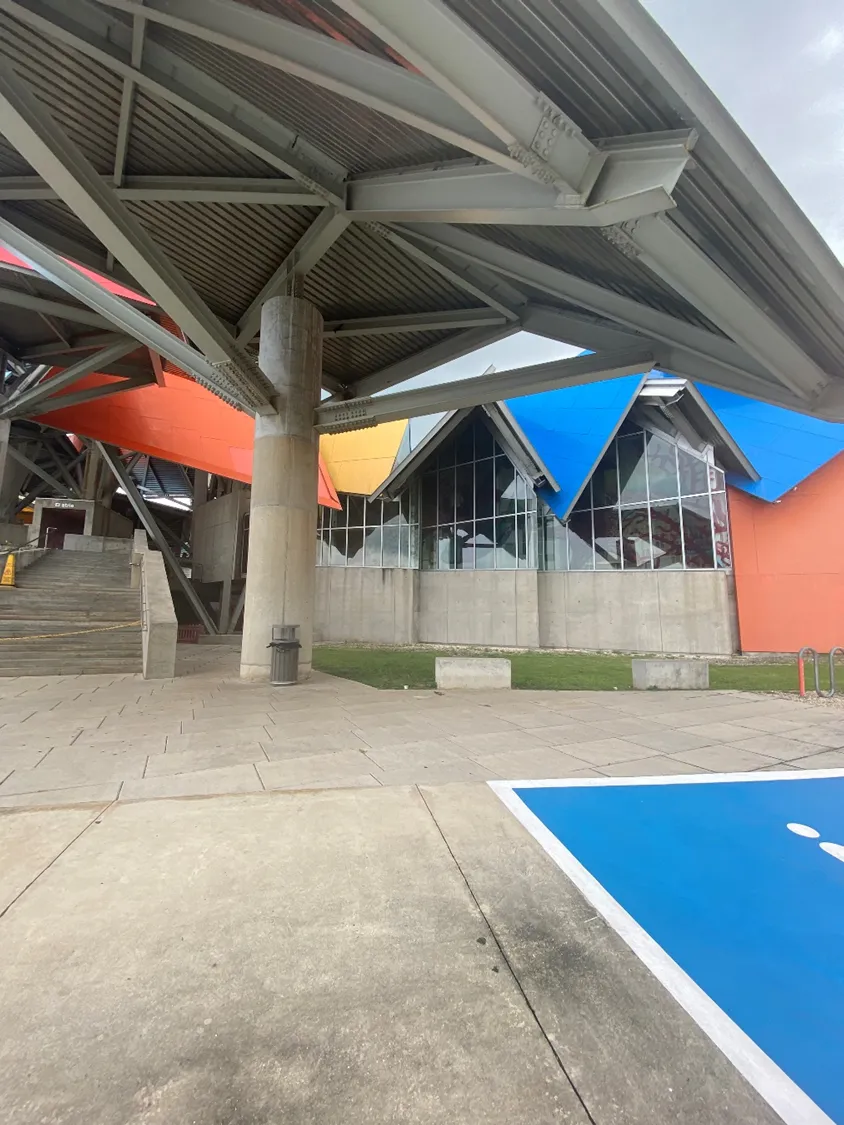
The museum consists of eight galleries, designed by the American studio Bruce Mau Design, for the permanent exhibition of works that narrate, in visual form, the history of the emergence of the Isthmus of Panama 3 million years ago, which divided the planet into two great oceans, the Pacific and the Atlantic, while contributing to the union of the American continent into one, thus helping to changing life on the planet and generating changes in biological diversity.
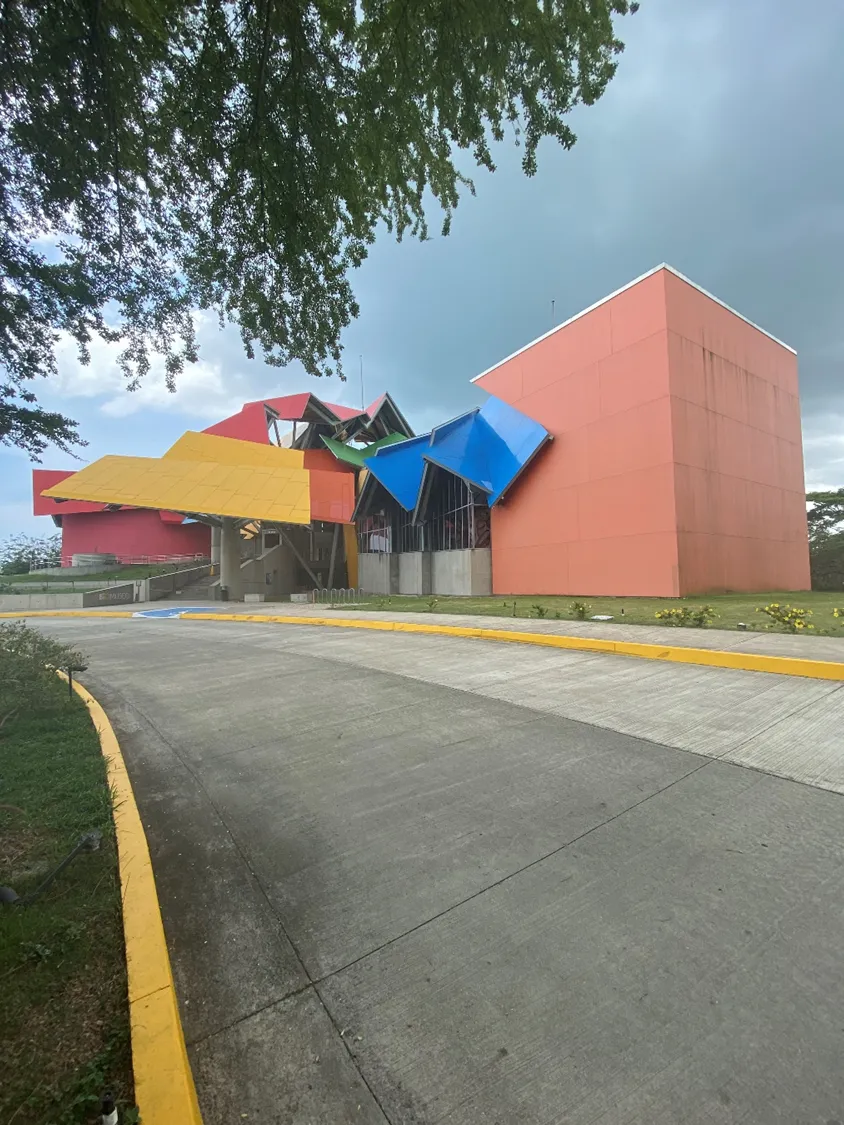
Bibliography consulted:
*https://arqa.com/arquitectura/biomuseo-museo-de-la-biodiversidad-en-panama.html
*https://www.bbc.com/mundo/video_fotos/2014/09/140930_fotos_panama_biomuseo_frank_gehry_jgc
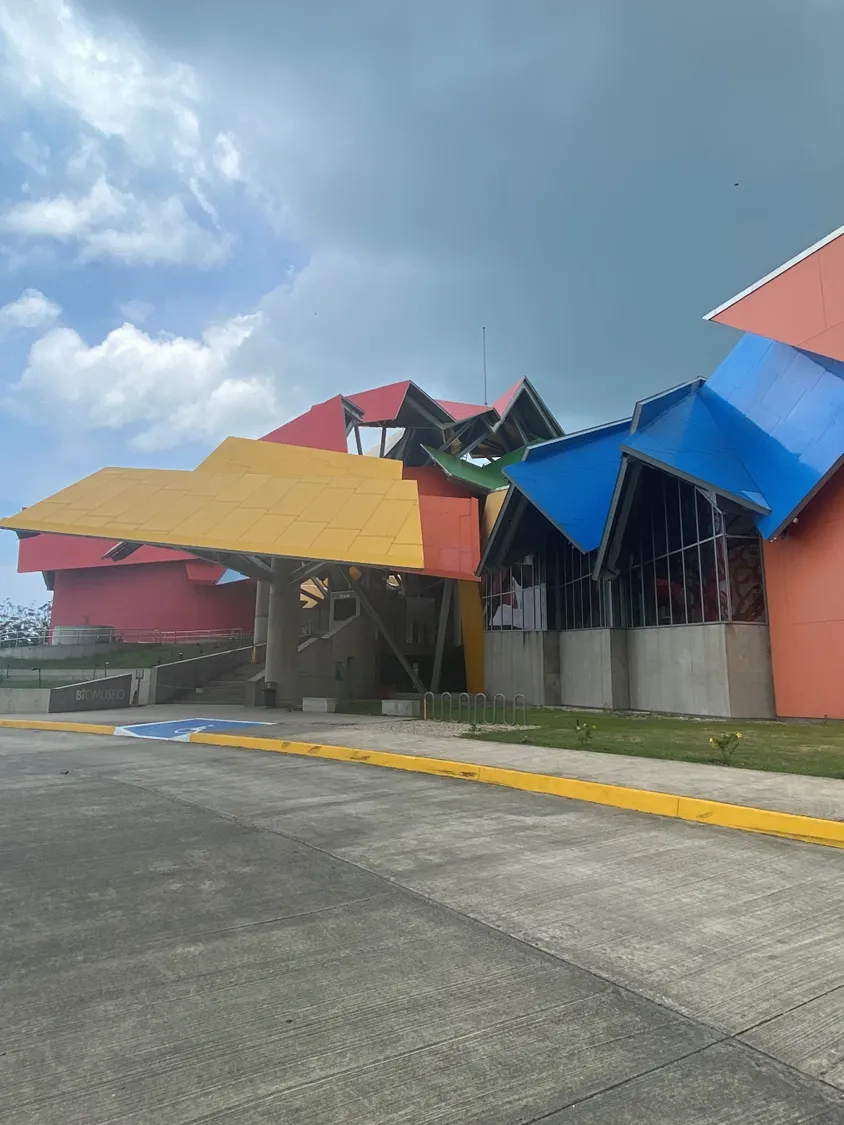

Estimados amigos y consecuentes lectores de nuestras publicaciones, hace pocos días le pregunté a unos entrañables amigos, Alexander y Arelis, que viven en Panamá, si habían visitado el Museo de la Biodiversidad, que, por lo que había leído, era un lugar único el cual valía la pena visitar. Efectivamente aceptaron mi recomendación, pero desafortunadamente el día de su visita se encontraba cerrado al público, por lo que tuvieron que contentarse con tomar una serie de fotos externas al Museo, pero indicativas de la riqueza arquitectónica del mismo, que hoy comparto con mucho agrado con ustedes. Debo comenzar indicando que este espacio, dedicado a la biodiversidad, ha sido impulsado por la Fundación Amador, con el respaldo del gobierno panameño y el apoyo científico del Instituto Smithsonian, de Washington D.C., y de la Universidad de Panamá.
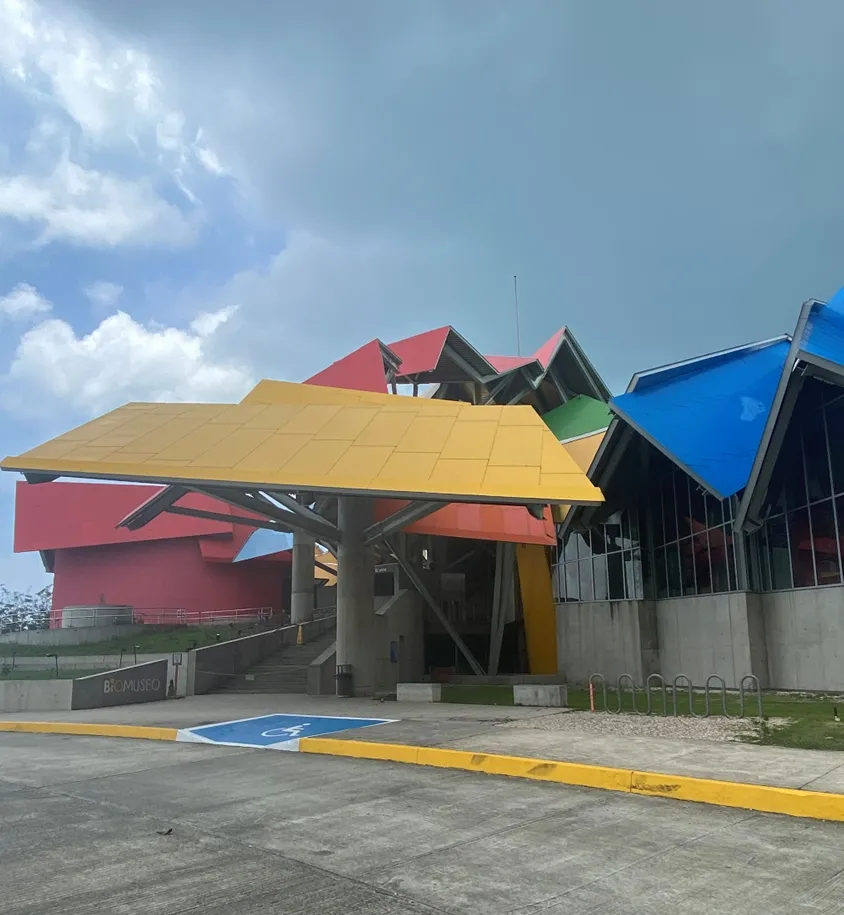
El Museo de la Biodiversidad, llamado “Puente de la Vida”, abrió sus puertas en 2014, es una obra arquitectónica vanguardista, con una estética propia e interesante. Se encuentra ubicado en la Calzada de Amador, abarca una superficie de cuatro mil metros, y cuenta con un magnífico jardín botánico, servicios varios, cafetería y tiendas. Ha sido construido a la entrada del Canal de Panamá en el océano Pacífico, en uno de los lugares de mayor biodiversidad del planeta.
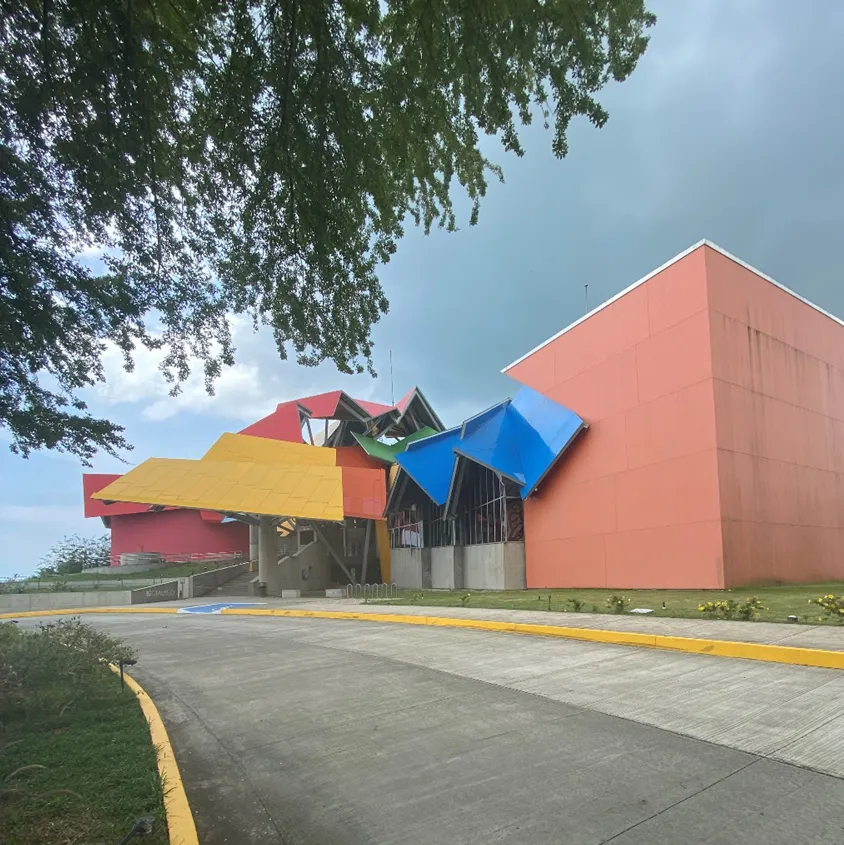
Su estructura está hecha con paneles metálicos plegados muy coloridos: la obra, de 13411 metros cuadrados, ha sido el único proyecto realizado en América Latina por el reconocido arquitecto canadiense, quien vive en los Estados Unidos de América, Frank Owen Goldberg, conocido como Frank Gehry, ganador del premio Pritzke. Gehry realizó esta obra contando con la colaboración del arquitecto hindú Arnand Devarajan, responsable del diseño arquitectónico del edificio. El objetivo de Gehry fue, por una parte, tratar de explicar la historia ecológica y geológica del origen del istmo de Panamá y, por la otra, crear conciencia sobre la necesidad de conservar el patrimonio natural del país.
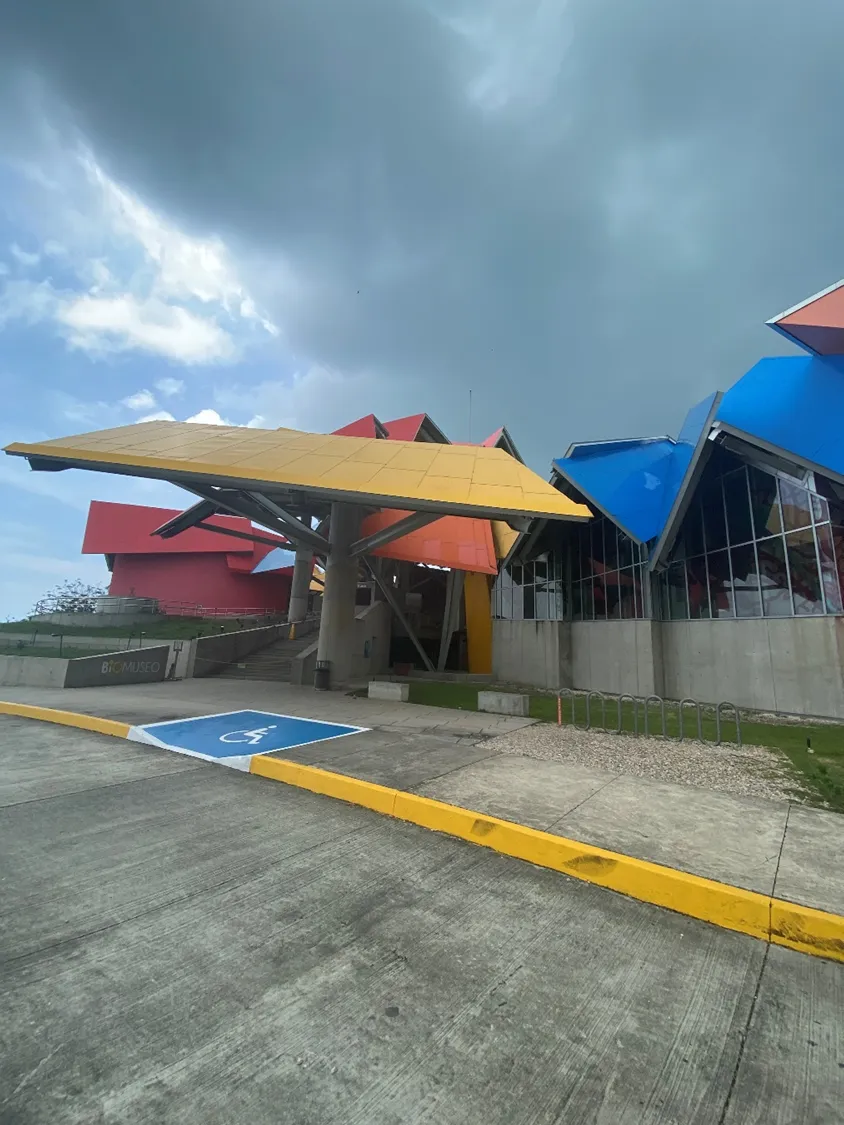
El núcleo central del diseño de Frank Gehry para el Biomuseo es un atrio público al aire libre, cubierto por una estructura dinámica, significativamente llamativa, conformada por un conjunto de doseles de aluminio de diversas formas y brillantes colores: azul, rojo, amarillo, verde, que lo hace un imán de atracción para turistas y visitantes locales. Los doseles emulan a la arquitectura canalera de techos de zinc y edificios coloridos, recuerdan el espectacular hábitat neotropical de Panamá y, además conforman una capa protectora contra las frecuentes lluvias que vienen generalmente acompañadas de fuertes vientos. Al estar elevado un piso por encima del nivel del suelo, el atrio ofrece amplias vistas al Canal y a la ciudad de Panamá.
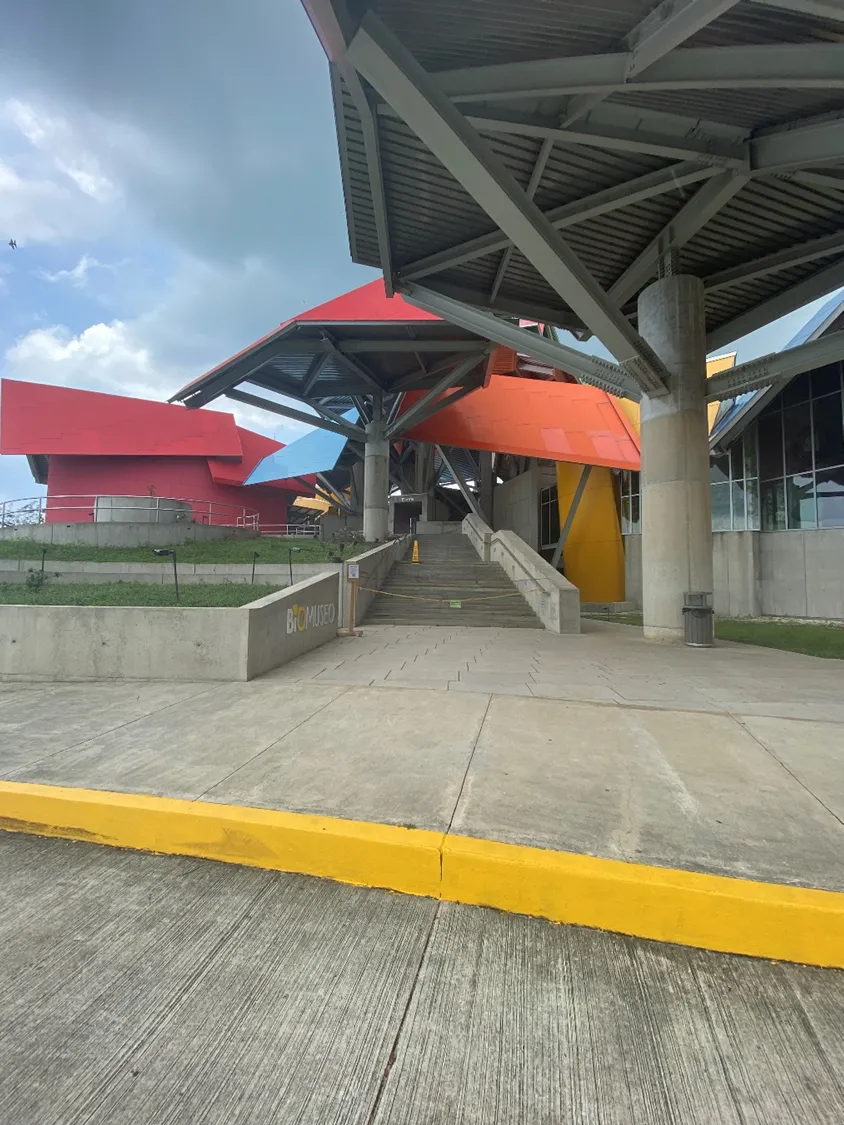
El museo consta de ocho galerías, diseñadas por el estudio de diseño estadounidense Bruce Mau Design, para la exhibición permanente de las obras que narran, en forma visual, la historia del surgimiento del Istmo de Panamá hace 3 millones de años, que dividió al planeta en dos grandes océanos, el Pacífico y el Atlántico, a la vez que contribuyó a la unión del continente americano en uno solo, ayudando, de esta forma, a cambiar la vida en el planeta y generando cambios en la diversidad biológica.
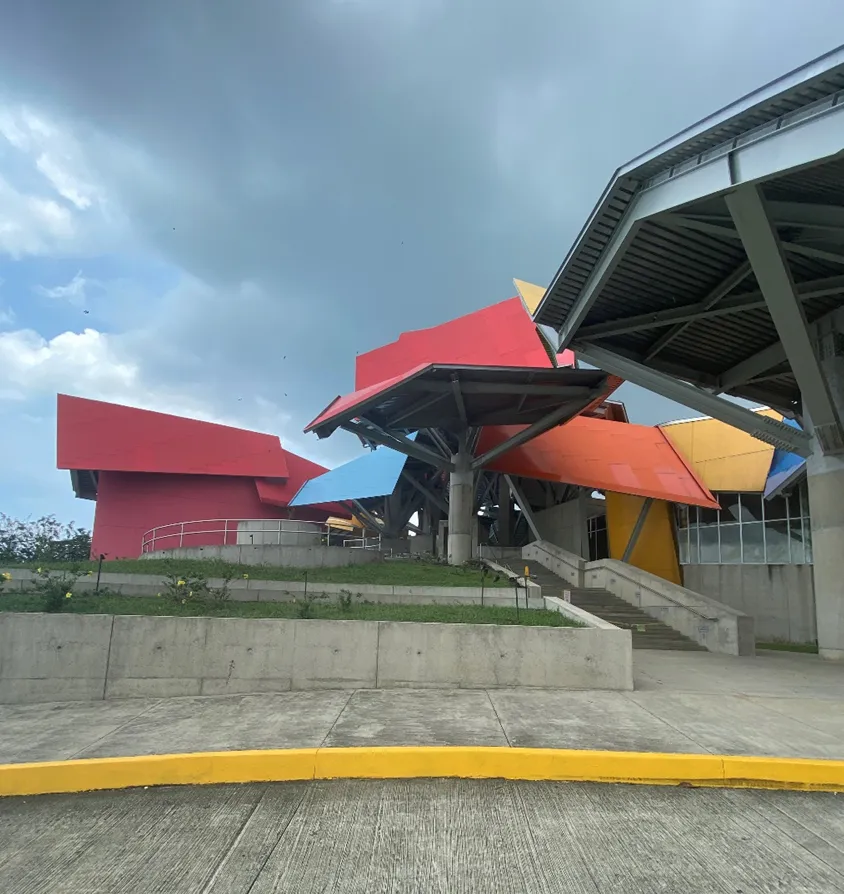
Bibliografía consultada:
*https://arqa.com/arquitectura/biomuseo-museo-de-la-biodiversidad-en-panama.html *https://www.bbc.com/mundo/video_fotos/2014/09/140930_fotos_panama_biomuseo_frank_gehry_jgc
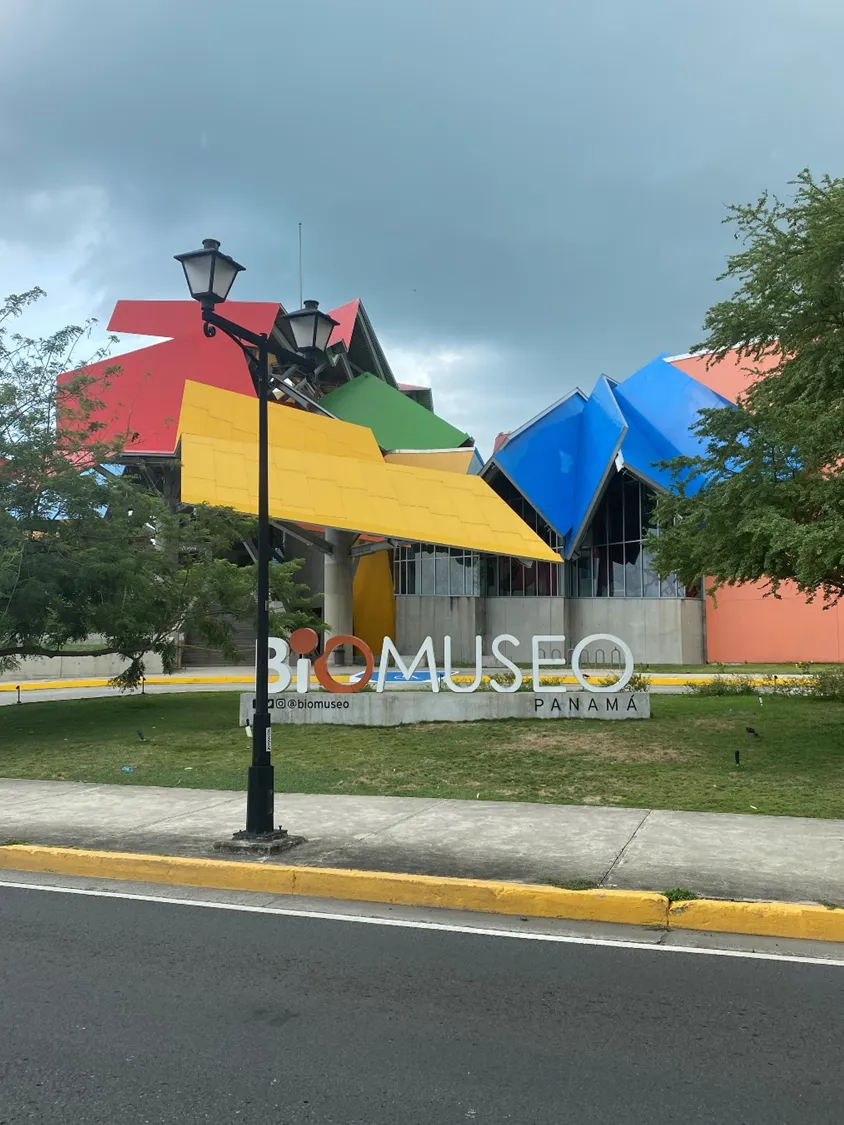
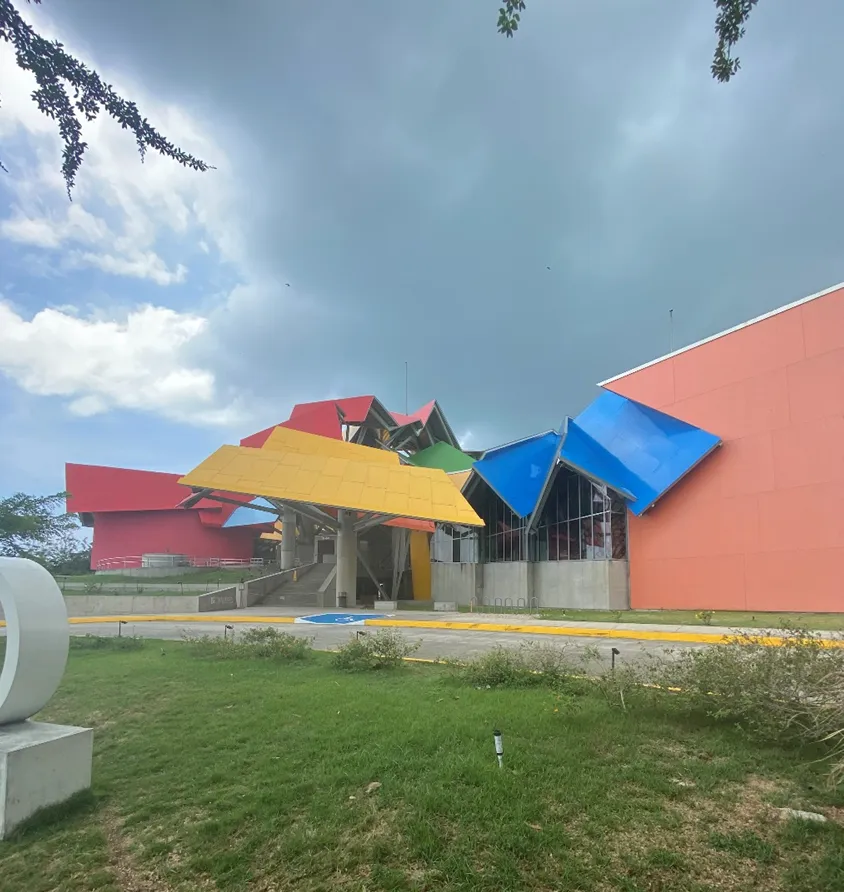
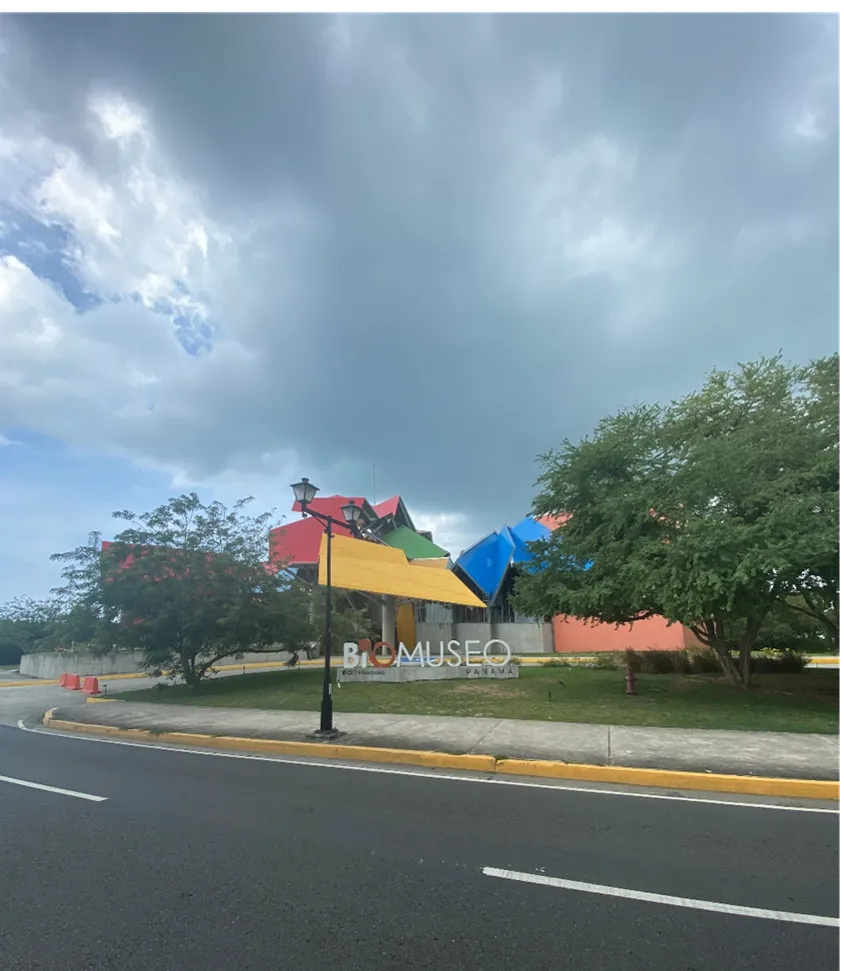
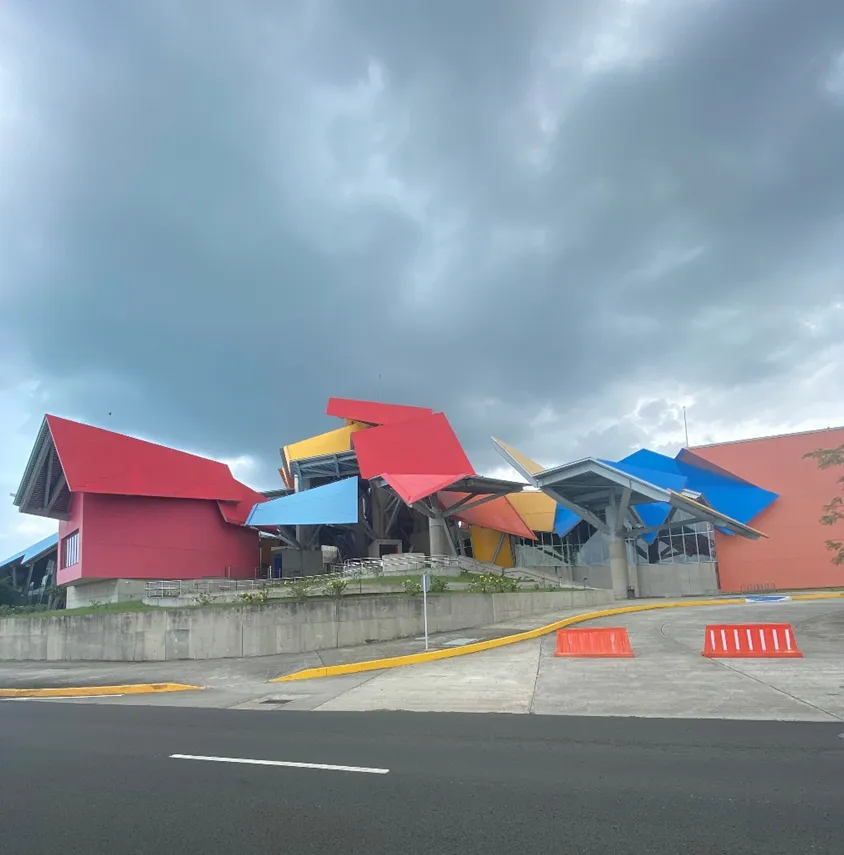

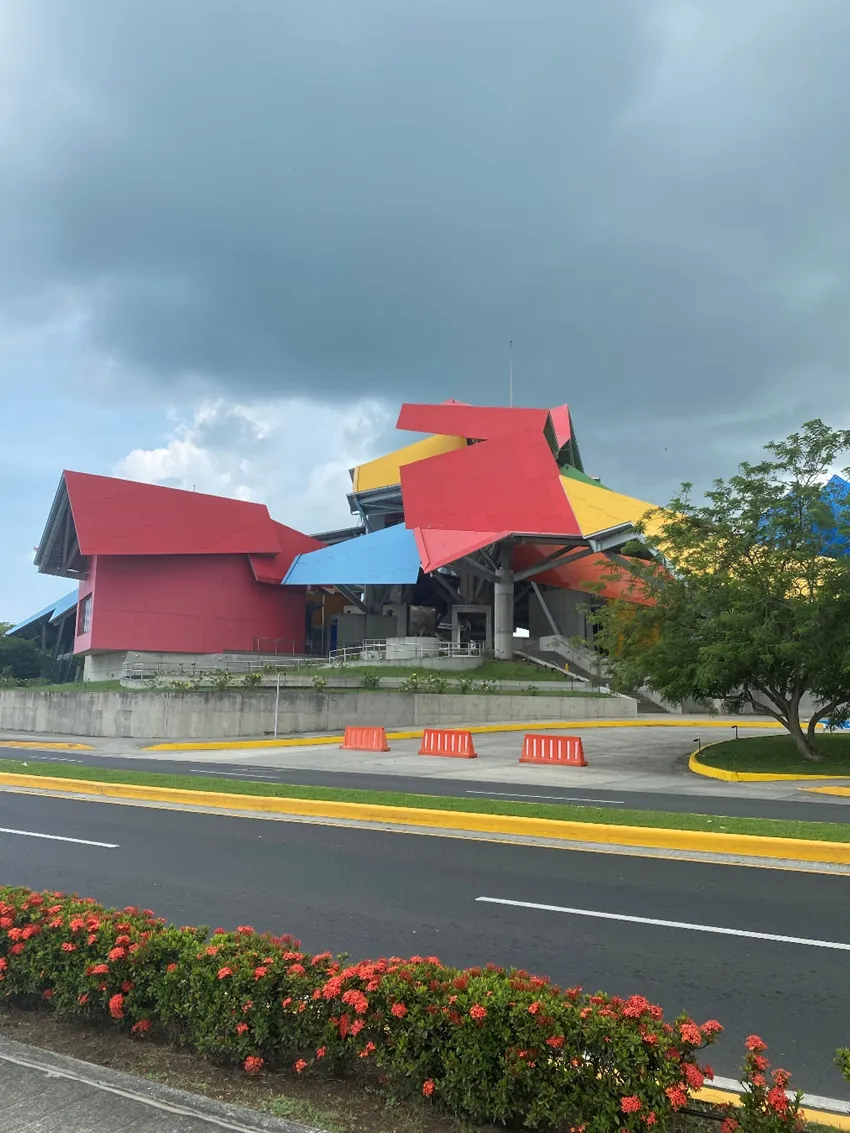
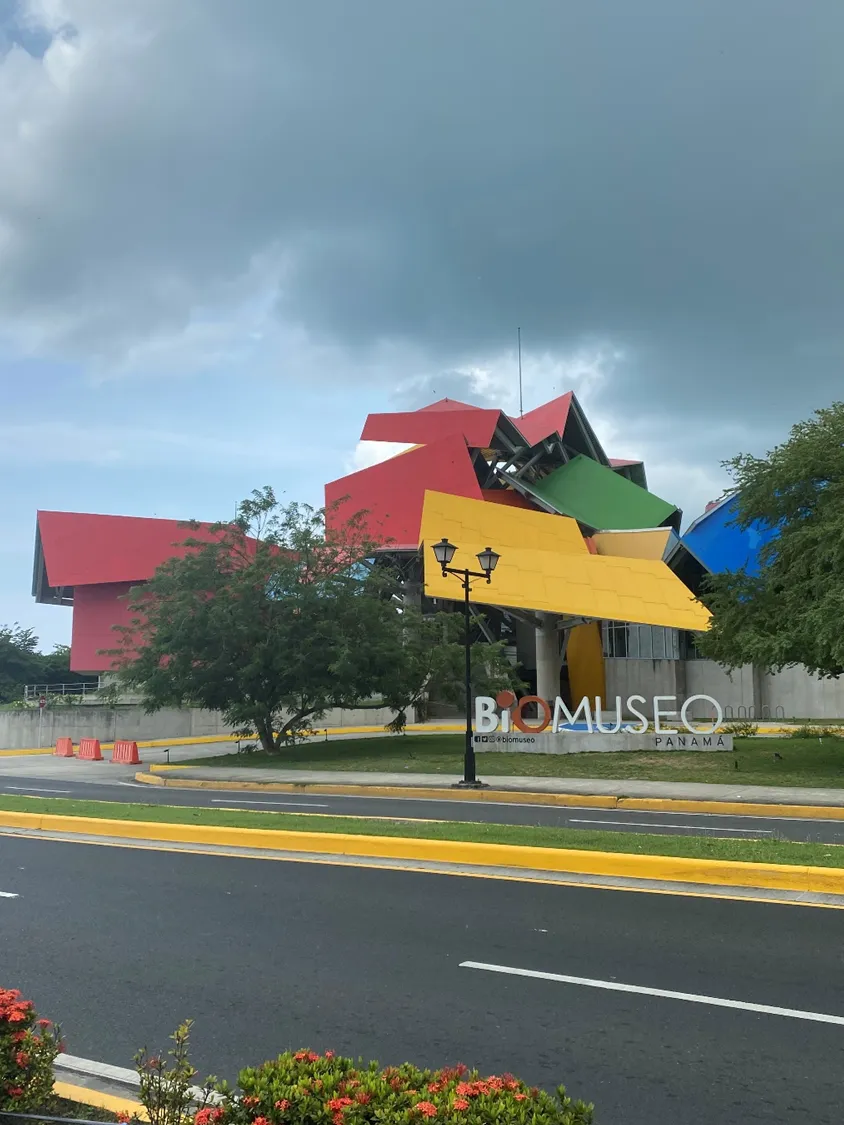
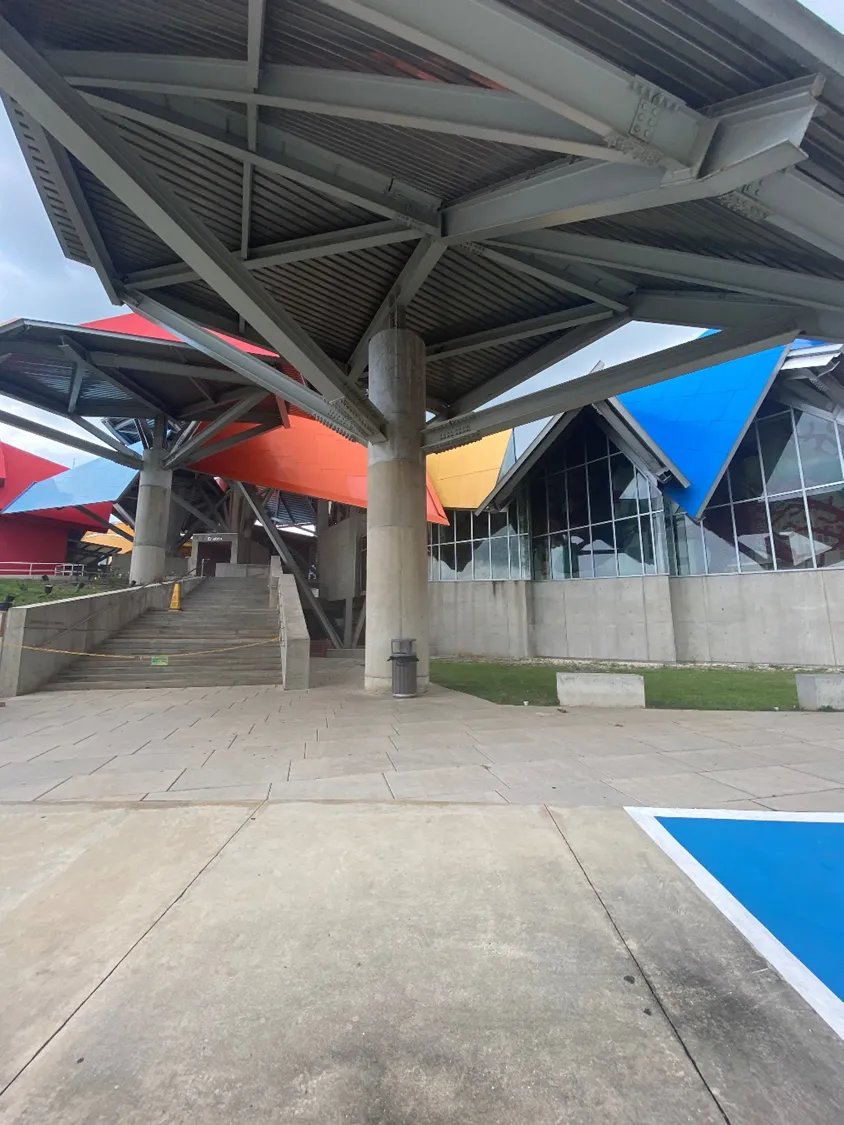
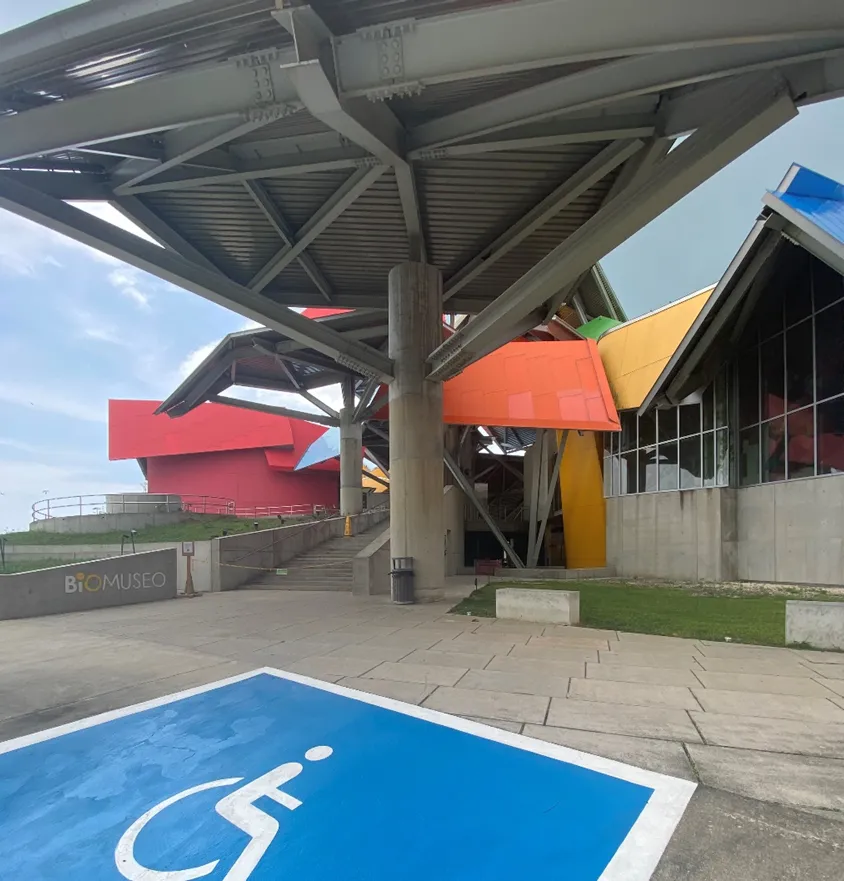
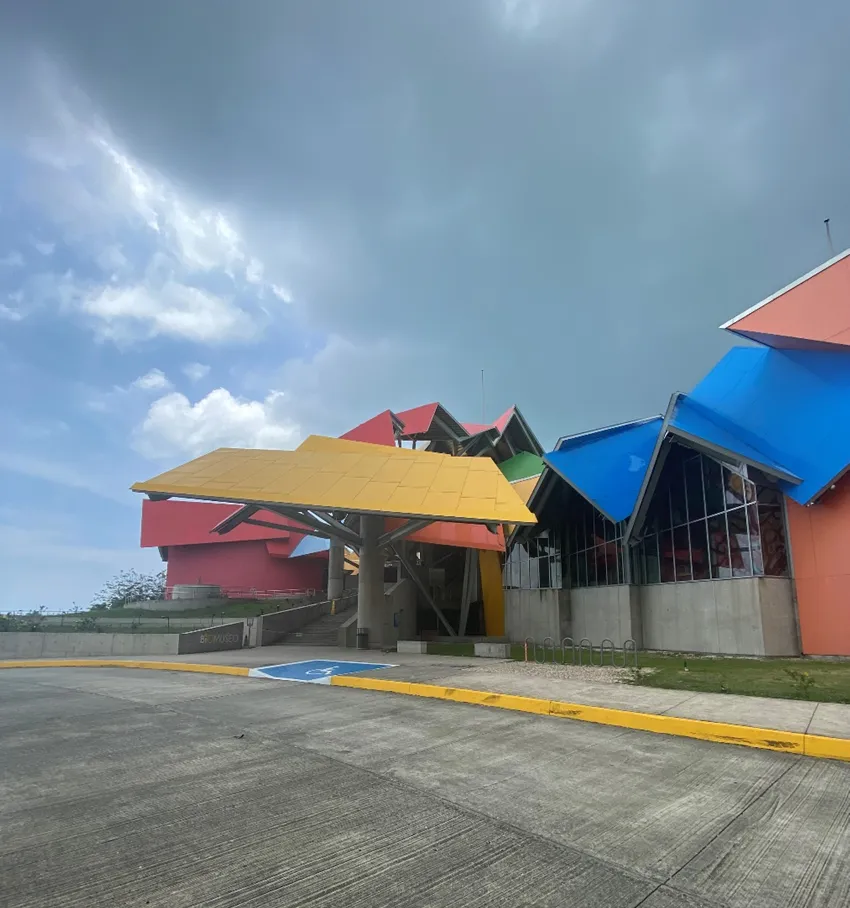
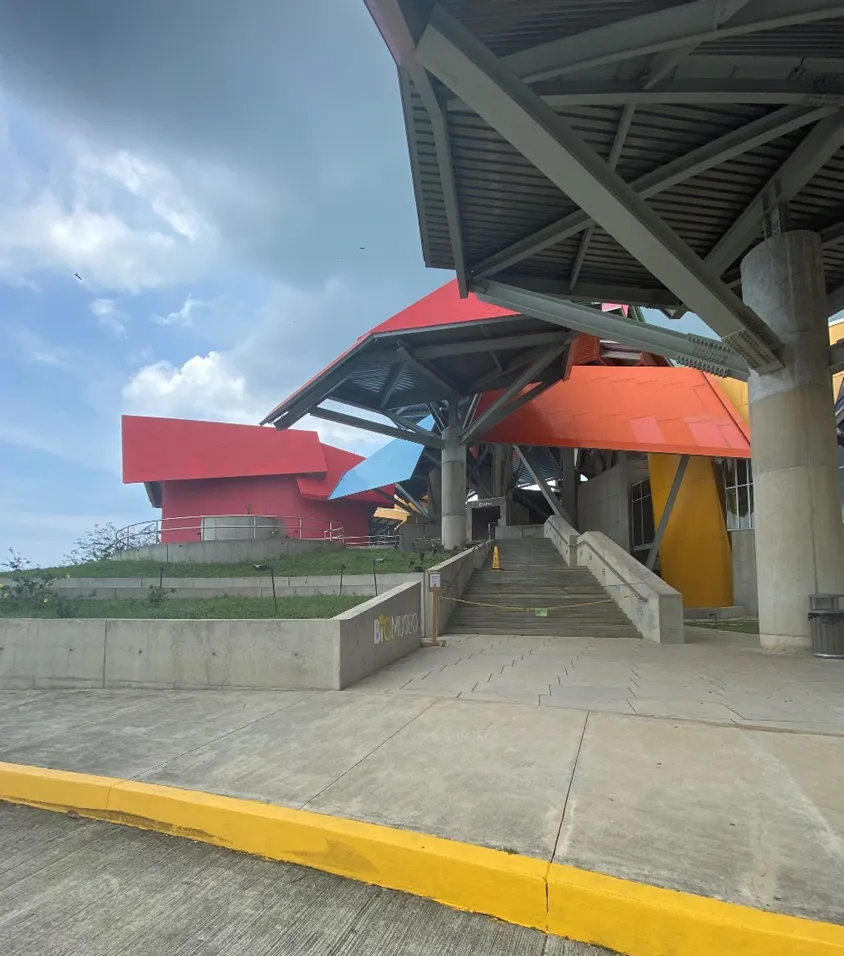
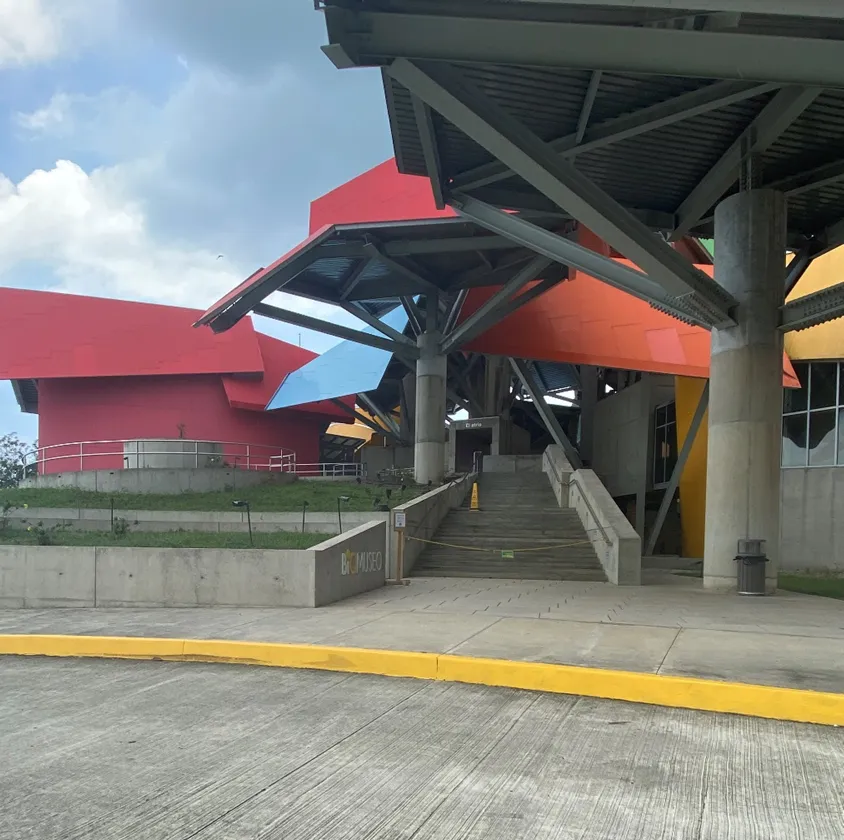
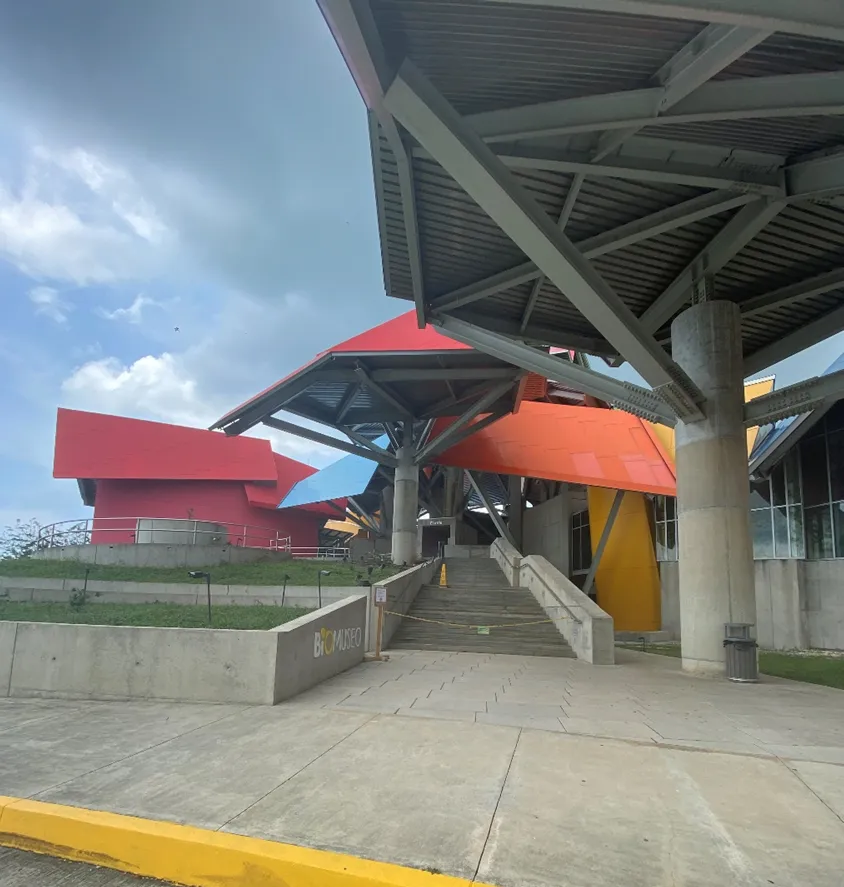
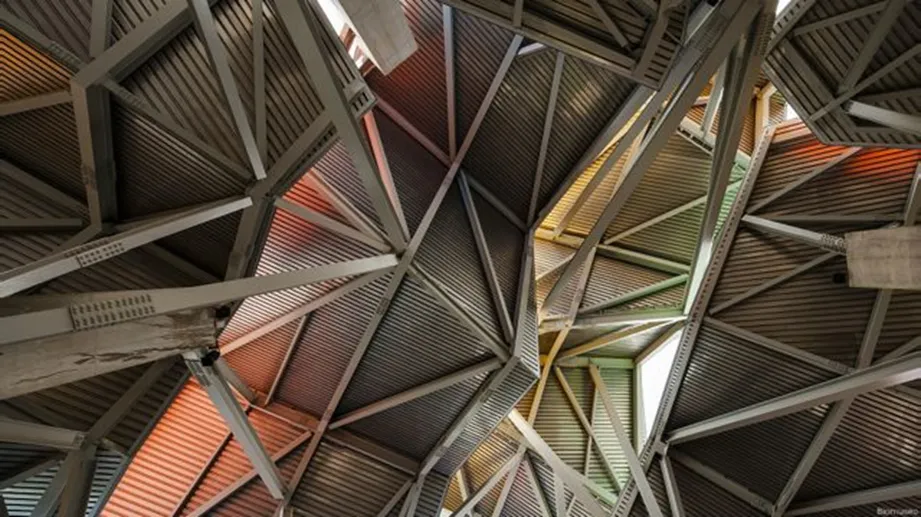
(https://www.bbc.com/mundo/video_fotos/2014/09/140930_fotos_panama_biomuseo_frank_gehry_jgc)
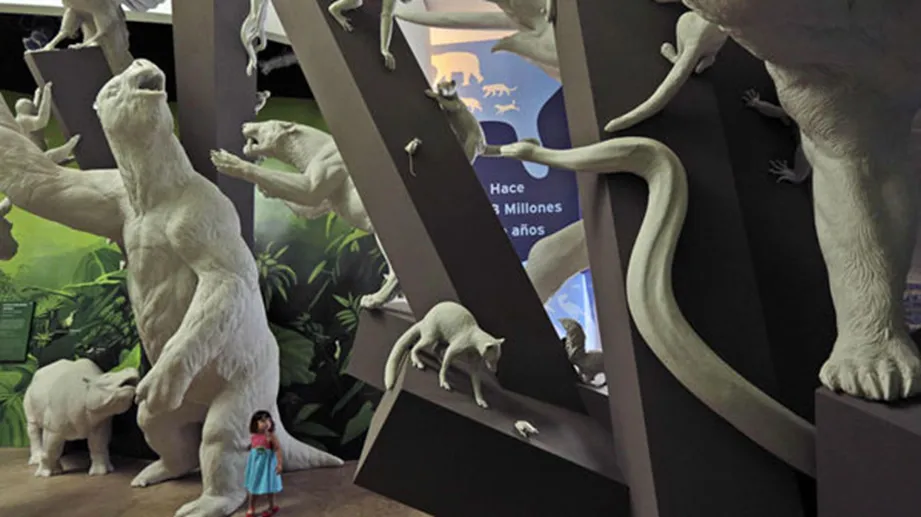
(http://cctv.cntv.cn/2014/10/17/VIDE1413507247613891.shtml)